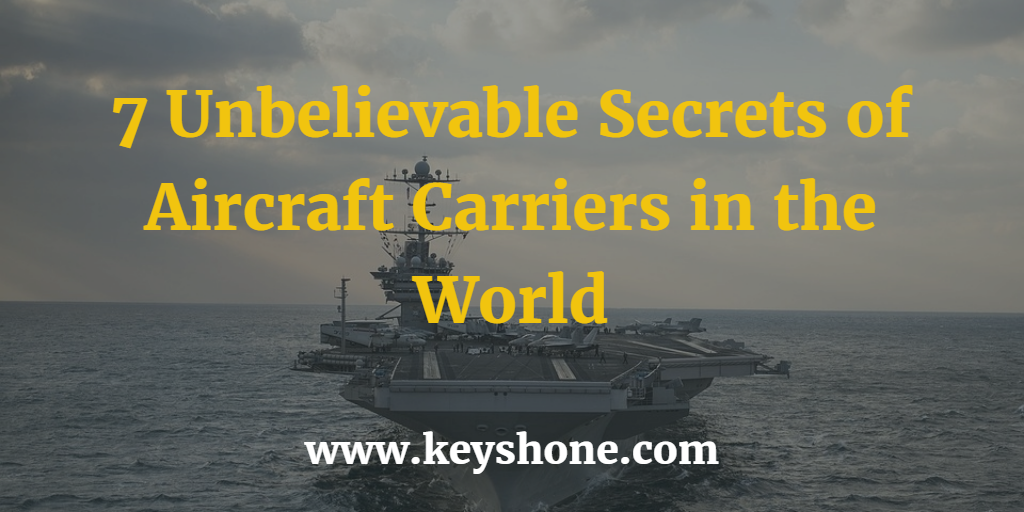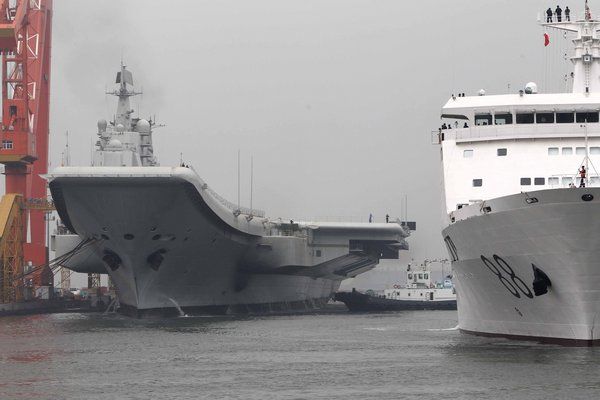
Table of Contents
7 Unbelievable Secrets of Aircraft Carriers in the World
The naval forces of powerful countries are using aircraft carriers for defense purposes.
Naval forces have fighter aircraft for securing their countries sea boundaries.
Currently, very few countries have aircraft carriers in the world.
Aircraft carriers are warships with complete aircraft landing and takeoff platform known as the flight deck. Carriers have other facilities like carrying, arming, deploying and recovering aircraft. Radar deck is a station to track and record the aircraft data in their range.
Radar deck is located on the starboard side of the aircraft carrier.
Hosho was the first home built an aircraft carrier in Japan.
This aircraft carrier design was finalized in 1918 and it was commissioned in the year of 1922.
HMS Hermes by Britain was commissioned in the year of 1924 for the royal navy.
Naval forces use the fighter aircraft for keeping their eye on the enemy and its various boundary disturbances.
These carriers support the naval forces defense. In this post, you will know about the 7 unbelievable secrets of aircraft carriers in the world.
What are those secrets of aircraft carriers? Let’s open the secrets of aircraft carriers in the world, one by one.
Related: INS Vikrant Aircraft Carrier Specifications
1. Number of Aircraft Carriers
According to the research data, there are 40 in service aircraft carriers in the world. Two aircraft carriers are in reserve each from India and United States. There are 10 aircraft carriers in under construction. The United States has a maximum number of aircraft carriers in service.
2. Type of Aircraft Carriers
We categorize the aircraft carriers by role, configuration, and size. Let’s start with the aircraft carrier type
By Role
- Fleet carriers: Fleet carrier is the largest and fastest with facilities of arming, deploying, recovering aircraft. For example Theodore Roosevelt (CVN-71)
- Escort carriers: Escort carriers are smaller and slower, they allow few aircraft to land and takeoff. For example HMS Audacity (D10)
- Merchant aircraft carriers: These are bulk cargo ships with a flight deck on its top. For example M/V Rapana, by Britain during first world war for carrying grains and oil tanks.
- Light aircraft carriers: These aircraft carriers are fastest but smaller in size and carry few aircraft.
By Configuration
- CATOBAR: Stands for catapult assisted takeoff but arrested recovery carrier. For example US Theodore Roosevelt (CVN-71)
- STOBAR: Stands for short takeoff but arrested recovery carrier, for example, India Vikramaditya (R33)
- STOVL: Stands for short takeoff vertical landing carrier, for example, India Vikramaditya (R33)
- Helicopter Carrier: These carriers are specifically designed for landing and takeoff of helicopters like America (LHA-6)
Related: 7 Greatest Aerospace Inventions in World
3. Identification Symbols of Aircraft Carriers
Most of you don’t know that aircraft carriers type and mission are identified by hull numbers and symbols. For example, hull symbol CVN stands for a nuclear-powered aircraft carrier. United States aircraft carrier Nimitz has hull number CVN-68 which is a nuclear-powered aircraft carrier. Same as rest of the existing aircraft carriers. Check the pdf for name of aircraft carriers, type and their hull numbers.

4. Largest Aircraft Carrier
US Nimitz class aircraft carriers with CATOBAR configuration are the world’s largest aircraft carriers with 333 meters length. The United States has 10 Nimitz class world’s largest aircraft carriers. These are fleeting carriers, which are faster and larger in space for aircraft.
5. The role of Catapult
A catapult is a mechanical device which is installed on the flight deck for assisted take off. Various ways are used to activate the catapult like air pressure, hydraulic pressure, steam power, flywheel, and gunpowder. For example, F-14 Tomcat aircraft used on USS Saratoga (CV-60) carrier.

6. Cold Cat
When an aircraft is going off the deck with less than the estimated speed, then it falls into the sea. This condition is known as a cold cat. A catapult device used for assisted take off when the take off speed is less than the estimated takeoff speed it causes the condition of the cold cast. This is one of the aircraft assisted takeoff failures.
7. Docking of Aircraft Carriers
Docking is a method of holding the aircraft carriers on the docking station or naval base station. Largest aircraft carriers are tagged with natural fiber rope to the naval base station. They are arrayed in a triangle. Natural fiber ropes are more elastic. US navy uses the natural fiber ropes for docking of aircraft carriers.
Related: 9 Absorbing Sciences Behind Airplane Flight Mechanics
Conclusion
Aircraft carriers are one of the biggest assets for naval forces in the world.
United states have 19 in service or commissioned aircraft carriers out of these 10 are world’s largest aircraft carrier.
Many developing countries have ordered aircraft carriers. In future, we will see more aircraft carriers.
I hope you loved this post if so don’t forget to share with your friends on social media.
References
https://en.wikipedia.org/wiki/Aircraft_carrier
https://en.wikipedia.org/wiki/List_of_aircraft_carriers_in_service
https://www.quora.com/How-are-large-aircraft-carriers-docked
https://www.naval-technology.com/features/feature-the-10-biggest-aircraft-carriers/
https://science.howstuffworks.com/aircraft-carrier.htm

